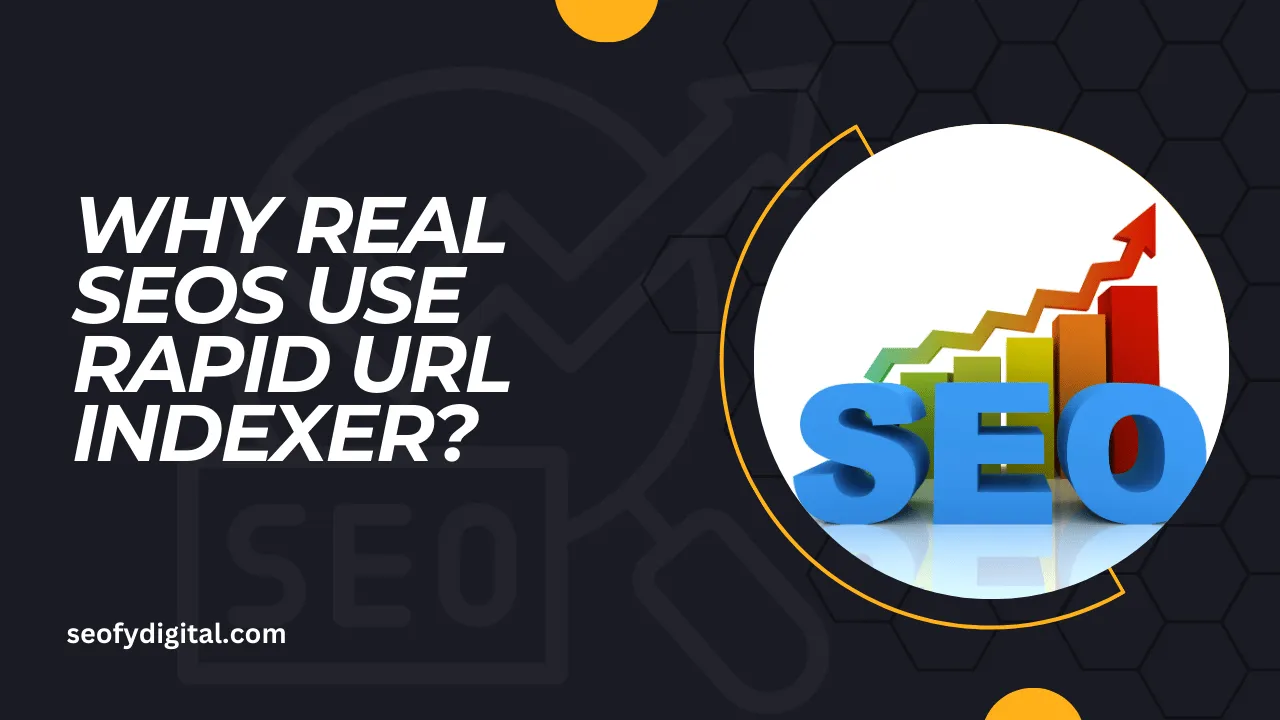Getting a new website or web page noticed by search engines can be a real pain point for SEO professionals and website owners alike. Search engines, particularly Google, can take days, even weeks, to index a new page, meaning it could be sitting there without visibility.
For any SEO expert, this delay can feel like a missed opportunity for traffic and growth, and the reality is that the longer your page isn’t indexed, the less potential it has to generate traffic or conversions. For competitive businesses and brands, slow indexing can mean falling behind competitors in the race to capture audience attention.
This is where Rapid URL Indexers come in, and they’re a game-changer. These tools speed up the indexing process, allowing new pages to go live on search engines in record time. With a well-implemented rapid indexing strategy, you can cut the wait time and get your pages noticed almost instantly.
But there’s more to these indexers than just instant visibility. They’re also a way to gain control over your SEO process and ensure that every new page, update, or product launch gets the visibility it deserves.
In this article, we’ll break down how rapid URL indexers work, their benefits, potential risks, and best practices. By the end, you’ll understand why real SEOs use rapid URL indexers and how they can elevate your SEO game when used strategically.

Contents
How Rapid URL Indexers Work
Understanding the Indexing Process: When you publish a new webpage, search engines like Google find it through crawling, a process where web crawlers (also known as bots or spiders) discover new content on the internet.
Crawlers analyze links within your website and on other sites to uncover new URLs. Once discovered, Google assesses the quality and relevance of the content to decide if it should be added to the index, where it can appear in search results.
The Role of Rapid URL Indexers: A Rapid URL Indexer directly submits URLs to search engines, bypassing the traditional waiting time involved in crawling. These tools send URLs directly to the search engine’s index, where they can be processed and shown in search results sooner.
Instead of waiting days or weeks for a crawler to find your page, rapid indexers provide a fast track for immediate attention from the search engine’s indexing systems.
Different Types of Indexers: There are various indexers, including manual indexers, automated indexers, and paid services. Manual indexers involve you or your team submitting individual URLs to search engines, often through tools like Google Search Console.
Automated indexers, on the other hand, allow you to bulk-submit URLs, making them ideal for larger websites or frequent updates. Paid indexers often offer the fastest results, as they are optimized for efficiency and may use advanced submission techniques, though they do require investment.
Benefits of Using Rapid URL Indexers
Faster Indexing: The primary advantage of rapid URL indexers is speed. For website owners or SEOs eager to get new pages ranking quickly, faster indexing means your content becomes visible to users sooner.
For example, if you’ve published a blog post on a trending topic, rapid indexing can ensure it appears in search results while the trend is still relevant, increasing the chance of attracting traffic and engagement.
Enhanced SEO Efforts: Rapid indexing also strengthens other SEO efforts. When combined with strategies like content optimization, keyword targeting, and link building, rapid indexing helps amplify the impact of these techniques.
This means that each update or improvement you make to your content can reflect faster in search engines, leading to quicker visibility and potential ranking improvements.
Improved User Experience: Indexing delays can prevent users from finding the most relevant and recent content on your site. Faster indexing ensures that users see the latest version of your content, improving their experience.
This is particularly important for news websites, eCommerce platforms with frequent product updates, and businesses publishing time-sensitive information.

Potential Drawbacks and Risks
Overreliance on Indexers: While rapid indexers are powerful, over-relying on them can be problematic. Some may use these tools as a shortcut, focusing more on fast indexing than on quality content and site structure.
It’s important to remember that rapid indexing doesn’t replace foundational SEO. A well-optimized website with a strong structure and valuable content remains essential. Risk of Penalties: Search engines penalize black-hat SEO practices, such as overusing rapid indexing for low-value or duplicate content.
Submitting low-quality content through an indexer could signal to search engines that your website isn’t focused on user value, leading to potential penalties. This can harm your overall SEO performance and diminish your credibility in search engine algorithms.
Cost Considerations: While some rapid indexers are free, the best-performing tools often come with a price tag. Premium indexers provide faster and more reliable results, but their costs can add up over time.
It’s essential to assess whether the investment aligns with your website’s goals and if the benefits outweigh the costs. For high-volume websites or those with frequent content updates, paid indexing can be worthwhile; for smaller sites, manual indexing may be more cost-effective.
Best Practices for Effective Implementation
Quality Content: Before submitting any URL, ensure the content meets high-quality standards and serves user intent. Quality is a top priority for search engines, so content should be well-researched, relevant, and offer genuine value to users.
High-quality content not only ranks better but also engages visitors, reducing bounce rates and improving SEO metrics.
Proper URL Structure: A clear, well-structured URL is crucial. Search engines and users both prefer short, descriptive, and keyword-rich URLs that clearly indicate what a page is about.
Avoid overly long URLs or those filled with numbers and symbols, as these can appear spammy and be harder for users to read and share.
Strategic Indexer Usage: Not every page on your site needs rapid indexing. Focus on high-priority pages that you want visible immediately, such as newly launched products, blog posts on trending topics, or seasonal landing pages.
Submitting every single page to an indexer can waste resources and potentially harm your site’s standing with search engines.
Monitor and Analyze: After implementing rapid indexing, track your site’s performance. Regularly monitor your indexation status through Google Search Console and other SEO analytics tools to see how well your rapid indexing strategy is working.
Analyzing these metrics, including traffic, engagement, and ranking improvements, will help you fine-tune your approach for maximum effectiveness.
Conclusion
Rapid URL indexers have become an invaluable tool for SEOs looking to stay competitive in today’s fast-paced digital environment. By allowing for instant visibility and faster SEO results, they’re a significant asset for website owners aiming for high search rankings and strong traffic growth.
Rapid indexers help bridge the gap between content creation and visibility, making it easier for brands to reach their audiences in real-time.As search engines continue to refine and improve their indexing algorithms, rapid indexing tools may continue to evolve.
While rapid indexing provides significant advantages, it should be approached with a balanced strategy that respects SEO fundamentals. Quality, relevance, and user-focused content remain central pillars of effective SEO.
Using rapid indexers responsibly can enhance your SEO approach, but they work best when paired with long-term, sustainable SEO practices like high-quality content and thoughtful keyword targeting. Remember, rapid indexing is a boost, not a substitute.
By focusing on a balanced strategy that values quality as much as speed, you can harness rapid indexing for sustained success.
FAQs
1. What is a Rapid URL Indexer?
A Rapid URL Indexer is a tool that accelerates the indexing process by directly submitting URLs to search engines, allowing faster page visibility in search results.
2. Why is indexing important for SEO?
Indexing is vital because search engines can only display indexed pages. Without indexing, a page remains invisible to users searching for related topics.
3. How quickly can rapid indexers work?
Some rapid indexers claim to index URLs within hours or a few days, offering a much faster alternative to traditional crawling, which can take weeks.
4. Are there free options for rapid indexing?
Yes, some basic rapid indexers offer free services. However, paid indexers are generally faster and more reliable for high-volume or time-sensitive pages.
5. Can overusing rapid indexers harm my SEO?
Yes, if used irresponsibly with low-quality or spammy URLs, overusing indexers can lead to penalties, as it signals poor content quality to search engines.
6. Should I use rapid indexers for every page on my site?
No, it’s best to use rapid indexers selectively, focusing on high-value pages to avoid over-indexing and potential negative impacts.








